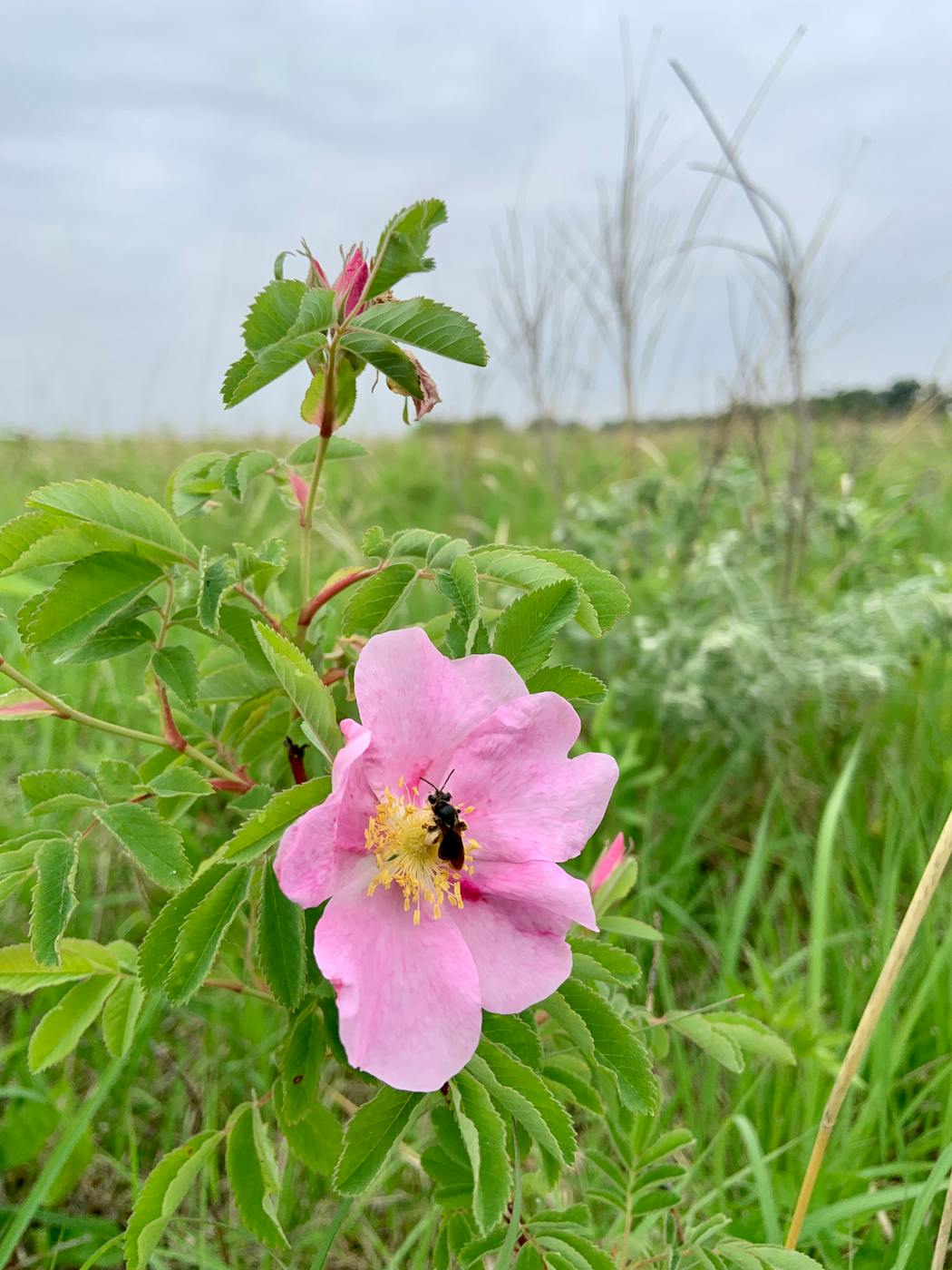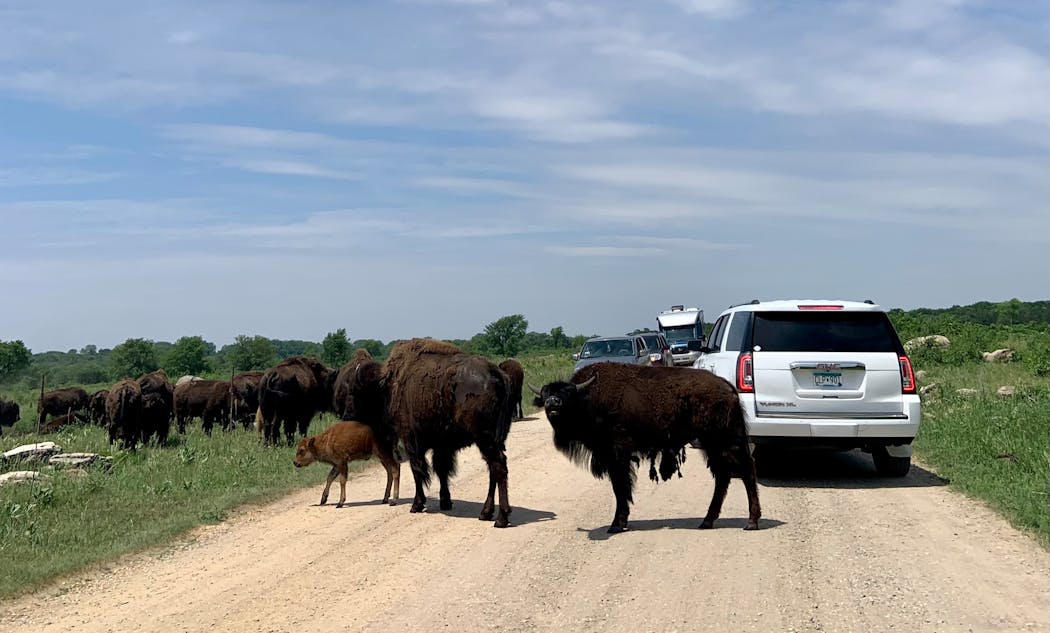What did I learn on my summer vacation?
Well, a backup trip has its own rewards.
A day before I was to head with my cousin Dan from Connecticut toward the Boundary Waters Canoe Area Wilderness in early June out of Sawbill Lake near Tofte, our long-held plans went sideways.
Dan suddenly was out with COVID-19, and there wasn't a ready substitute — as enticing as it appeared — on short notice. Not my wife or busy kids. None of my close friends, who always are down for a good adventure.
Packed as I was for meals and more, I was determined to salvage my week, and content to travel alone. I had a few bedrock prerequisites for Plan B: if I couldn't be in the BWCA, I still needed to be near water; I wanted to experience new places; and I decided to remain within a few hours drive of my home in the metro.
My love for Minnesota's outdoors is without bounds. While I'd intended on being north, my heart and mind (and those prerequisites) said, "Go south." Over five days, I traveled and camped at a city campground and three state parks — Hok-Si-La Park and Campground in Lake City; Nerstrand Big Woods State Park in Nerstrand; Rice Lake State Park, east of Owatonna; and Minneopa State Park in Mankato — before heading home.
I paddleboarded over barge wakes; saw bald eagles on the wing and a rebuild after a nest collapse; wet a line with a bucktail and a prayer; tore through Peter Heller's latest thriller, Martin Amis' salty essays, and other backlogged reading; hiked under and through green columns of ancient hardwoods; and got comfortable with long stretches in silence.
Perhaps most memorable is that I was busy doing nothing. The pace of my days away wasn't extraordinary, but followed a simple rhythm that campers know and that is part of the activity's allure. To prepare camp. To start a fire. To cook. To get water. To walk. To read. To get more water. To touch the earth. All are exercises in quiet contemplation that run counter to the daily noise of modern life.
I missed getting into the BWCA with my cousin and its wild possibilities for sure. But Plan B? It delivered its own riches.
Day 1: Hok-Si-La Municipal Park and Campground
This combination of woodland, shoreline and river lowlands is on Lake Pepin and just north of Lake City's commercial district off Hwy. 61. Once a Scout camp, its 250 acres were purchased by the city 50 years ago and developed into a park and campground.
I had an excellent campsite among several on a small grassy perch above a milelong beach. An ideal spot to collect driftwood for a fire or to hit the water. A late-day paddle south on my inflatable board, past the park beach, past the Center Point peninsula that defines the northern shoreline of the city, was great relief in the thick humidity.
Hok-Si-La gets heavy use as a free public park, too. The shore was busy with swimmers and beachcombers, and visitors are allowed to use unoccupied campsites to hang out and grill.
The park has snappy-looking camper cabins, too, like the ones so popular in the state park system. Three more are in development.
Lake City has stuck by an agreement with the Scouts that it would keep the site rustic and for tent camping only. In an age of big recreational vehicles and electric hookups, some prospective campers leave disappointed, said park manager Lisa Quest.
Just the same, the park has a large, loyal following. Families, as well as groups (from birders to kayakers to Jet Ski lovers), return year after year.
Campers are allowed to have their vehicles at their sites for only 30 minutes to drop off their gear. Then they have to return, past an electric gate, to the public parking lot. That lack of wheels is part of Hok-Si-La's appeal, Quest said. It's a place to spread out and walk, unsullied by motorized traffic.
"The locals agree [Hok-Si-La] is a hidden gem," Quest said. "Not a lot of people know about it." (hoksilapark.com)
Day 2: Nerstrand Big Woods State Park
From the river valley through the rolling uplands of Sogn and Dennison, I made my way over an hour or so to the state park, dominated by a dense stretch of hardwood forest.
The park's history reflects land acquisition and conservation challenges that are rife in the back stories of state parks-in-the-making decades ago, according to the book "Everyone's Country Estate: A History of Minnesota State Parks" by Roy W. Meyer.
In fact, supporters of a Nerstrand park in the 1930s put as much weight on the area's natural significance as its possibilities for public recreational use. Some in government planned to leverage a new constitutional amendment where the U.S. Forest Service would acquire land in the Nerstrand Woods and swap it for state-owned lands in the Superior National Forest. Still, it would be more than a decade before the park was established and several more after that before the park was developed for recreation.
I admired the park from both lenses, hiking from my campsite through a forest of oaks, basswood and maples to the park's iconic Hidden Falls, heard before seen. I wasn't the only one. (bit.ly/nerstrandmn)
Day 3: Rice Lake State Park
Much like Nerstrand, the park is an isle of woodland amid farmland. My cart-in site, one of four, felt remote in an already sleepy park. But I shared part of a hiking trail along the perimeter of the park, and several hikers came through over the course of the day. While it was described as a shoreline site, my site looked over thick marsh rushes and other plants spread out 100 yards or more between it and the lake proper. The closest I got to water and breezy relief on a hot, hazy day was a striking pier on the lake's northern edge. It extended from land donated years ago in by the Izaak Walton League as the park came to be.
Alas, the pier didn't get me closer to hooking a fish — any fish — in the shallow lake. But I could appreciate the park's most visible residents, from red-winged blackbirds to a variety of water birds. I was eight miles or so east of Owatonna, but as the day lengthened, a light breeze sifted through the trees, and I was bathed in silence. I might as well have been in a remote wilderness. (bit.ly/ricelakemn)
Day 4: Minneopa State Park
I was reminded quickly again of the BWCA when I began unpacking for my night's stay: gnats were surprisingly, ridiculously intense, a manic swirl of trouble. Telltale was when the friendly campground host, Paul, popped over, donning a head net at 4 in the afternoon. With the campground perched above the Minnesota River, I came around to the source of the little antagonists.
I got my tent pitched, downed some jerky and a pita with peanut butter and honey, and sought refuge at the 385-acre bison prairie, arguably the star attraction at Minneopa that has made one of the oldest state parks one of the most visited. (More than 250,000 people in 2022.)
The Minnesota Conservation Herd is 44-strong, with 13 calves. No doubt the calves were behind the steady trail of vehicles parading through and, at times, parking to ogle the spring arrivals.
Park supervisor Ashley Steevens said some of the herd will get relocated based on the amount of forage later this year and other land management goals. Plus, this healthy line of bison has helped establish the herd elsewhere in Minnesota. Five bison at Minneopa were moved last year to Spring Lake Park Reserve, where Dakota County is establishing a herd to continue the goals of preserving and improving the mammals' genetic diversity and building their population. (bit.ly/minneopamn)
Roaming on the land, building up a bit of resilience — those were ideas I could relate to as I returned to my campsite not far from the impressive beasts and the dust for my final night.
My thoughts turned to more possibilities afield this summer in Minnesota. Gnats and all.

Souhan: Twins' early struggles were unsightly but not definitive

Timberwolves savor a San Francisco treat with surge past Warriors

Scoggins: Timberwolves' Game 3 win spins from willingness to get 'right down there in the mud with them'

Twins drop Giants 2-1, thanks to Ryan's arm and Larnach's bat






